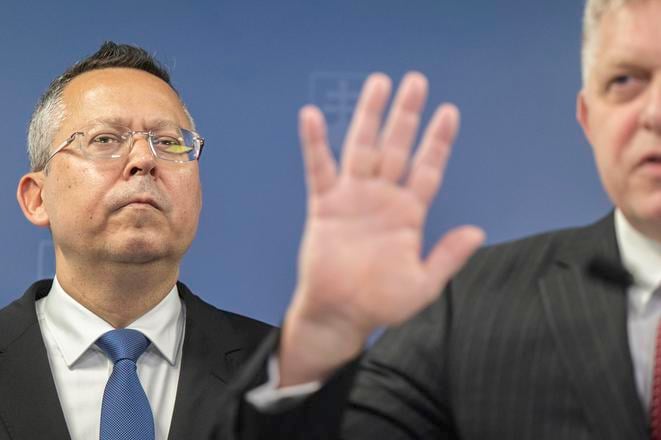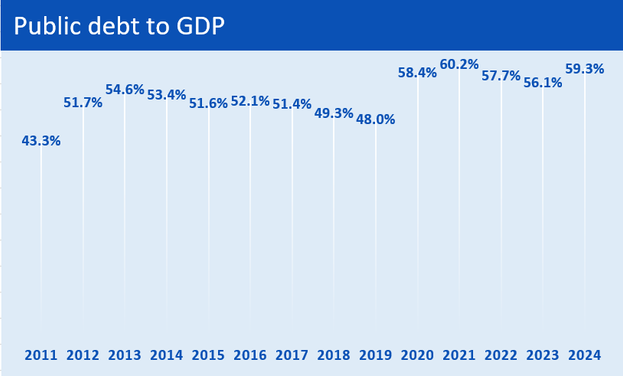Slovakia’s political leaders are grappling with a growing financial headache as the country faces historically high costs to service its national debt.
Official figures show that Slovakia has spent over €1 billion on debt interest payments since the beginning of the year — a sharp increase from previous years — and the total is expected to hit a new record by the end of 2025, according to Hospodárske noviny.
The surging cost of borrowing is a direct result of several factors. Persistent budget deficits, which have been a problem for years, mean the government must borrow more money to fill gaps in the state budget. On top of that, interest rates on newly issued bonds remain elevated, making it much more expensive to finance this new debt.
Record interest bill
According to data from the Finance Ministry, interest payments on state debt grew by almost 41 percent year-on-year (€312 million) by the end of July. Last year, the total figure for the entire year was under €1.2 billion, but current projections forecast this year’s bill to be nearly €1.65 billion.
Experts say this trend is unsustainable. “The total interest we’re going to pay will likely be the highest ever,” said Daniel Bytčánek, director of the Debt and Liquidity Management Agency (ARDAL). He explained that two main factors are at play: the high level of existing debt and the relatively high interest rates required by investors.
The government’s challenge is made worse by the need to refinance older debt that was borrowed at lower interest rates. “Every year, we’re adding billions in new debt that needs to be financed at interest rates over 3 percent,” Bytčánek added. “On top of that, we have old bonds with lower yields that are maturing, and we have to cover them with today’s higher interest.”
Analysts have noted that the average yield on bonds sold in the first half of this year was 3.45 percent, while the average yield for the country’s entire bond portfolio is currently 2.51 percent. This gap means that as old debt is replaced with new, more expensive borrowing, the overall cost to the state will continue to rise.
Slovakia’s debt peaks
This financial pressure comes at a time when Slovakia’s national debt is once again climbing. The country’s debt-to-GDP ratio is projected to reach 61.8 percent (€84 billion) this year, surpassing the previous record of 61.09 percent set during the pandemic in 2021 and exceeding the EU’s Maastricht limit of 60 percent. This translates to a debt of around €15,600 for every Slovak citizen, up from €14,328 last year.
In response, the government is under pressure to present a plan to address the country’s finances. The third consolidation package, which could include new tax measures or cuts to state spending, has not yet been revealed but is expected to be announced next week.



